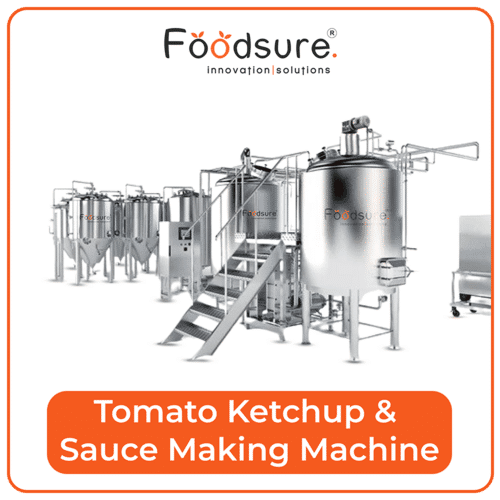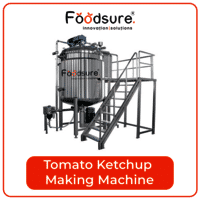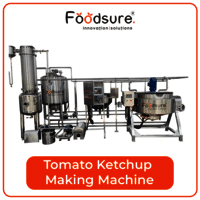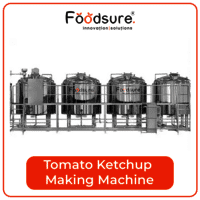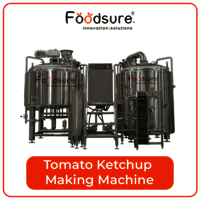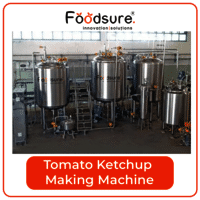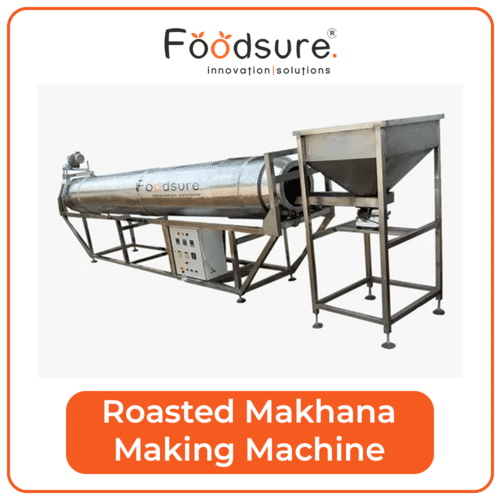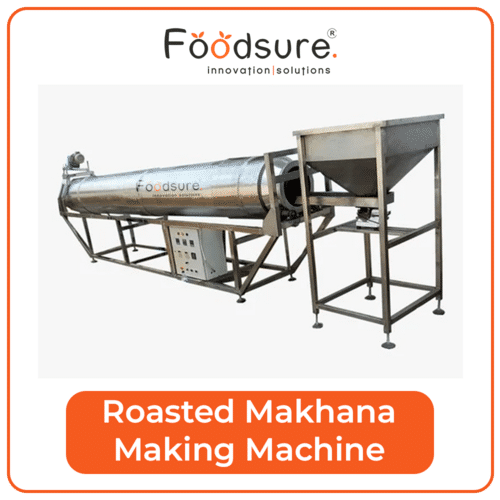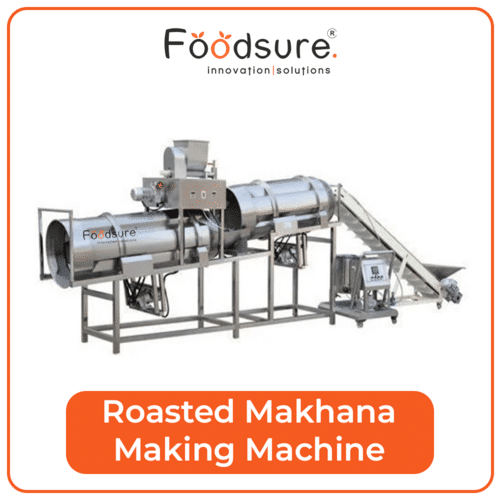Welcome to Foodsure!
Tomato Ketchup Plant Machinery
1000000 INR/Unit
Product Details:
- Product Type Tomato Ketchup and Sauce
- General Use Industrial and Commercial
- Material Stainless Steel
- Capacity Upto 3000 Kg/day
- Weight (kg) 1000 Kilograms (kg)
- Computerized Yes
- Automatic Yes
- Click to View more
X
Tomato Ketchup Plant Machinery Price And Quantity
- 1000000 INR/Unit
- 1 Unit
Tomato Ketchup Plant Machinery Product Specifications
- 420 Watt (w)
- 1000 Kilograms (kg)
- Manual
- Yes
- Yes
- Stainless Steel
- Industrial and Commercial
- Tomato Ketchup and Sauce
- Upto 3000 Kg/day
- ECO Friendly Low Noice Lower Energy Consumption Compact Structure High Efficiency
- Table Top
- 20 Watt (w)
- 1 Year
Tomato Ketchup Plant Machinery Trade Information
- New Delhi
- Paypal Cash Against Delivery (CAD) Cash on Delivery (COD) Cash Advance (CA) Cash in Advance (CID) Cheque
- 10 Unit Per Month
- 30 Days
- Yes
- Free samples are available
- Wooden Packing & Bubble Rap Packing
- Asia Australia Central America North America South America Eastern Europe Western Europe Middle East Africa
- All India
- ISO9001:2015
Product Description
Tomato Ketchup Plant Machinery
The process in the Tomato Ketchup Plant Machinery usually consists of several steps that vary according to the instructions and products required.Foodsure's tomato ketchup plant is equipped with state-of-the-art machinery designed to ensure efficiency, quality, and consistency in every batch of tomato ketchup produced.
- Cleaning and cleaning: Wash the tomatoes to remove damaged or damaged parts . After damage , it should be cleaned to remove any dirt or debris .
- Peeling and seeding: After boiling , transfer the tomatoes to the peeling and seeding machine . Then the resulting pulp is collected in jars.
- Mixing and cooking: Combine tomatoes with other ingredients such as salt , sugar and spices in a large bowl . Heat and stir constantly to ensure even cooking and prevent sticking .
- Packaging: Put ripe tomatoes in a container ( such as a bottle , tin can ) and close it . Containers are labelled , packaged and shipped.
- Pasteurisation: In order to ensure the safety of the product , tomato paste is pasteurised with heat for a short time . This will kill any bacteria or other organisms that may be present .
- Cooling and Storage: Pasteurized tomato paste is cooled and stored in a temperature-controlled place until it is ready to be sent to warehouses or outlets.
Process Flow Chart for Making Tomato Ketchup Plant:
- Raw Material Reception: Fresh tomatoes are received and inspected for quality.
- Cleaning and Sorting: The tomatoes are thoroughly cleaned to remove dirt and debris. They are then sorted to remove any damaged or spoiled tomatoes.
- Chopping and Crushing: The cleaned tomatoes are chopped into smaller pieces and then crushed to form a pulp.
- Heating: The tomato pulp is heated to a specific temperature to facilitate the extraction of juice and to kill any harmful bacteria present.
- Straining: The heated tomato pulp is strained to remove seeds, skin, and any remaining solids, resulting in a smooth tomato puree.
- Mixing: The tomato puree is mixed with other ingredients such as sugar, vinegar, salt, and spices to achieve the desired flavor profile.
- Cooking: The mixture is cooked at high temperatures to thicken the ketchup and develop its characteristic flavor.
- Cooling: The cooked ketchup is cooled down rapidly to prevent spoilage and maintain freshness.
- Packaging: The cooled ketchup is filled into bottles or containers, sealed, and labeled.
- Quality Control: Samples of the finished product are tested for quality, including taste, texture, color, and shelf life.
- Storage: The packaged ketchup is stored in a controlled environment to maintain its quality until it is ready to be shipped to retailers or distributors.
- Distribution: The finished tomato ketchup is distributed to supermarkets, grocery stores, restaurants, and other food service establishments for sale to consumers.
Tell us about your requirement

Price:
Quantity
Select Unit
- 50
- 100
- 200
- 250
- 500
- 1000+
Additional detail
Mobile number
Email
Other Products in 'Processing Machines' category
Back to top

